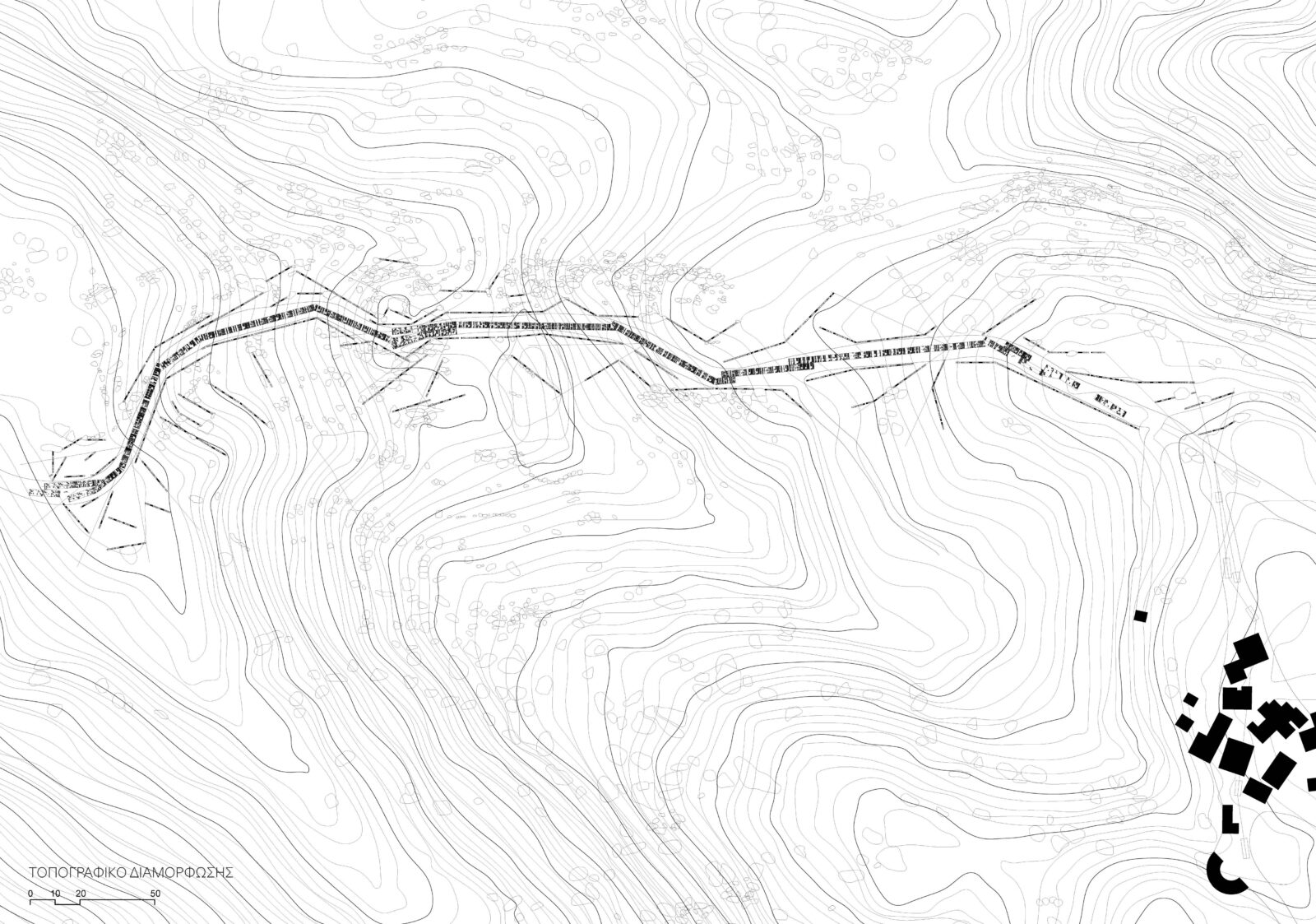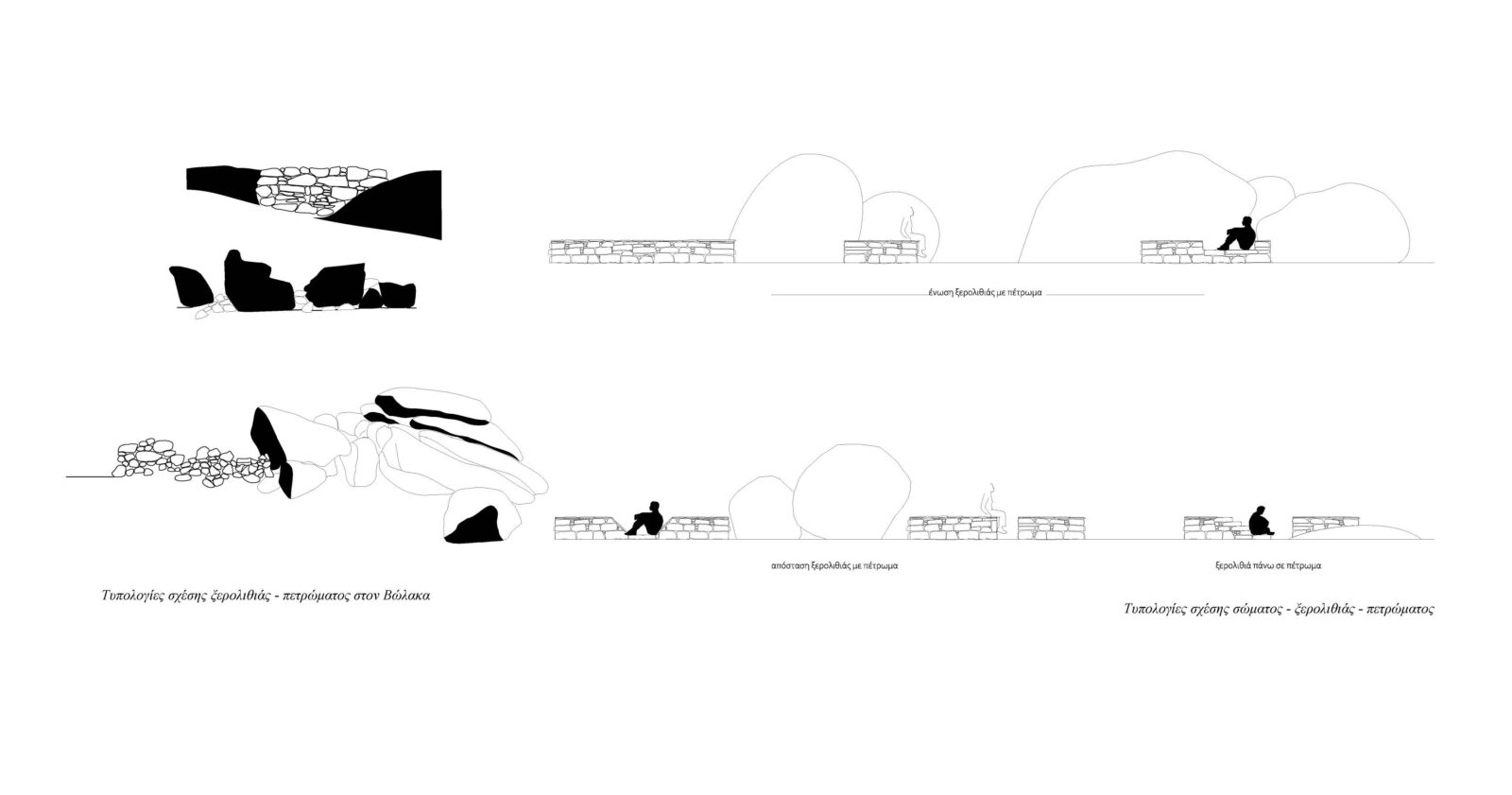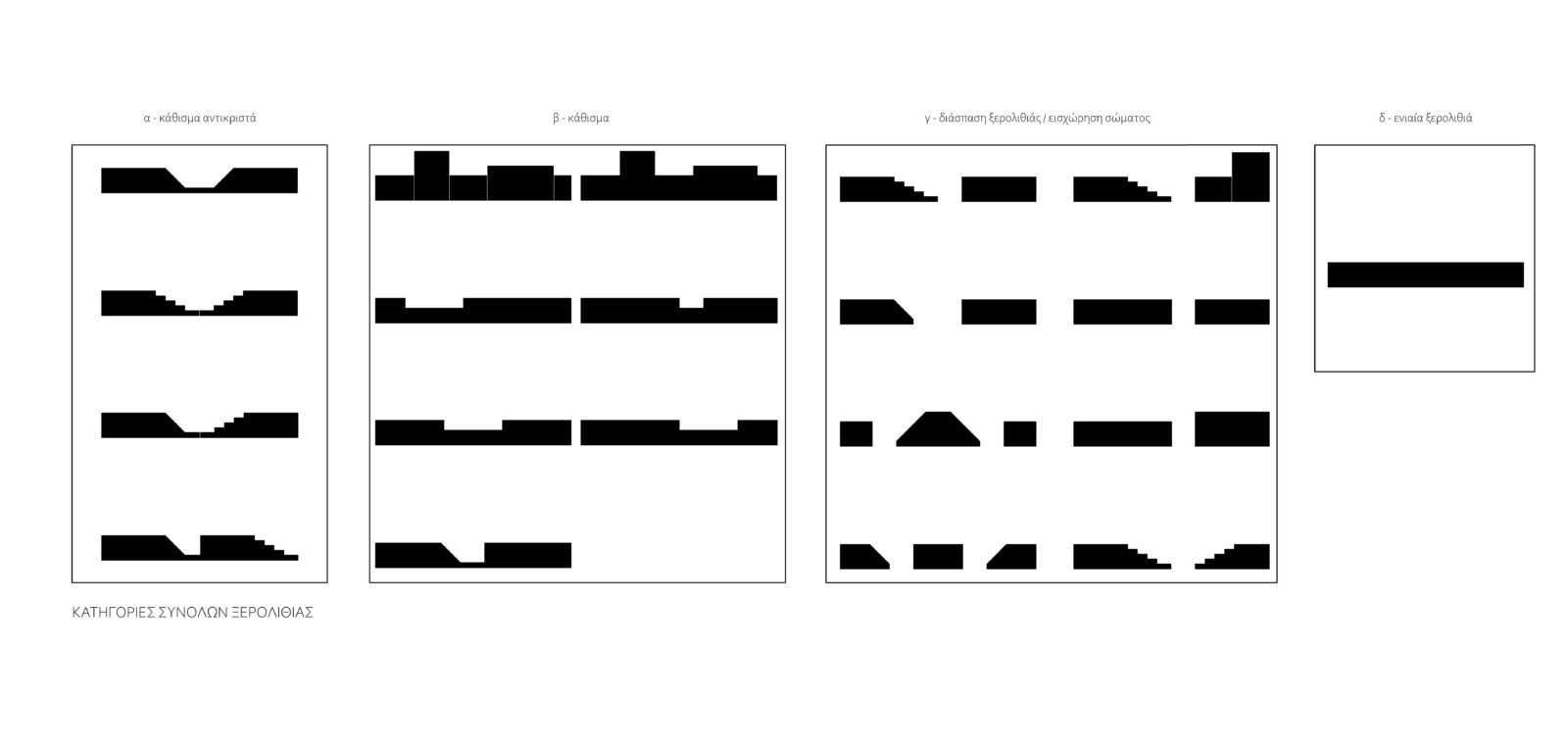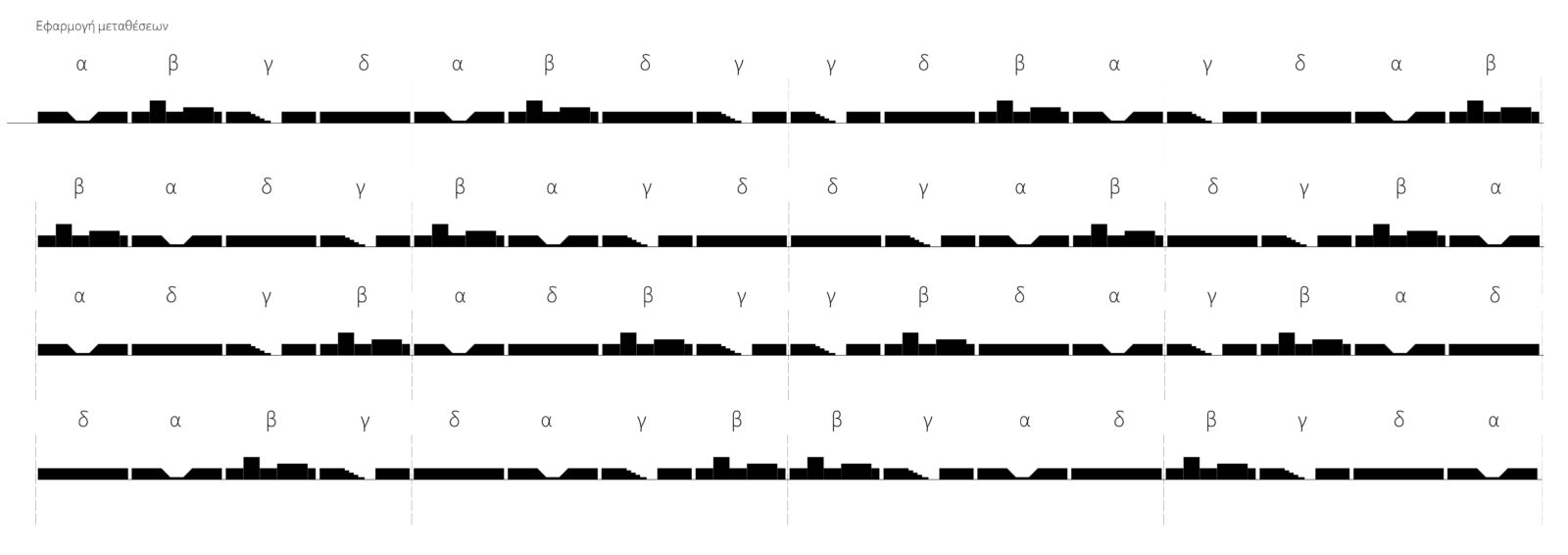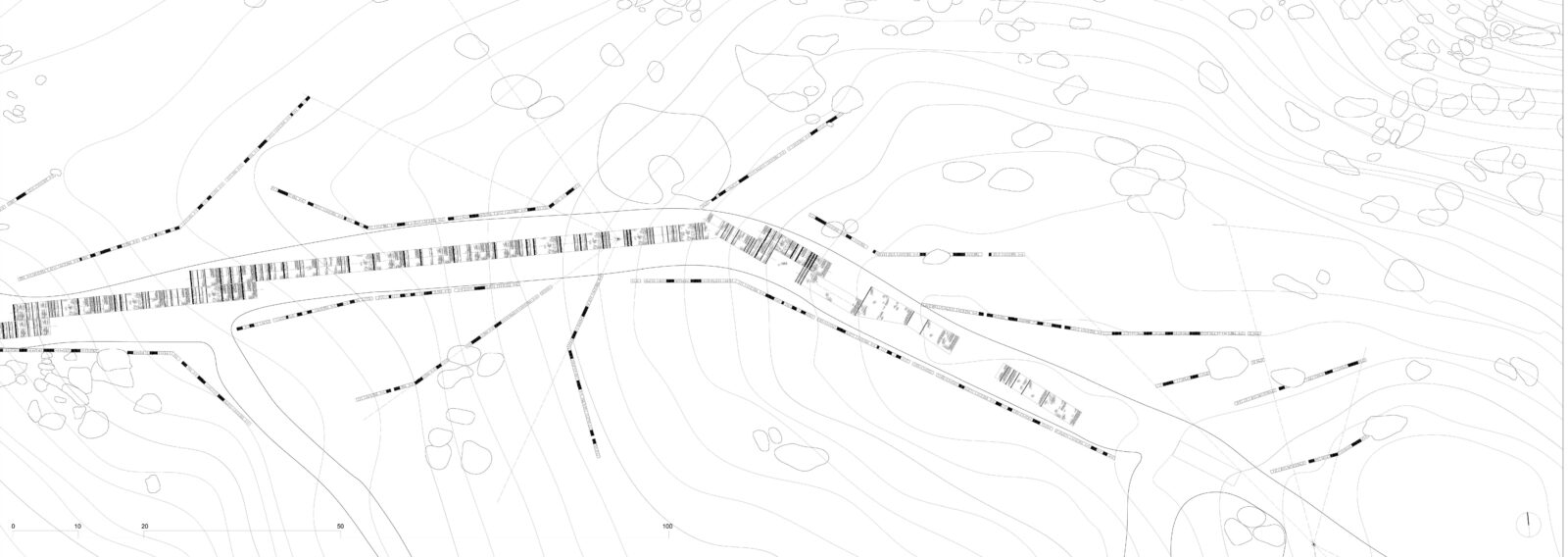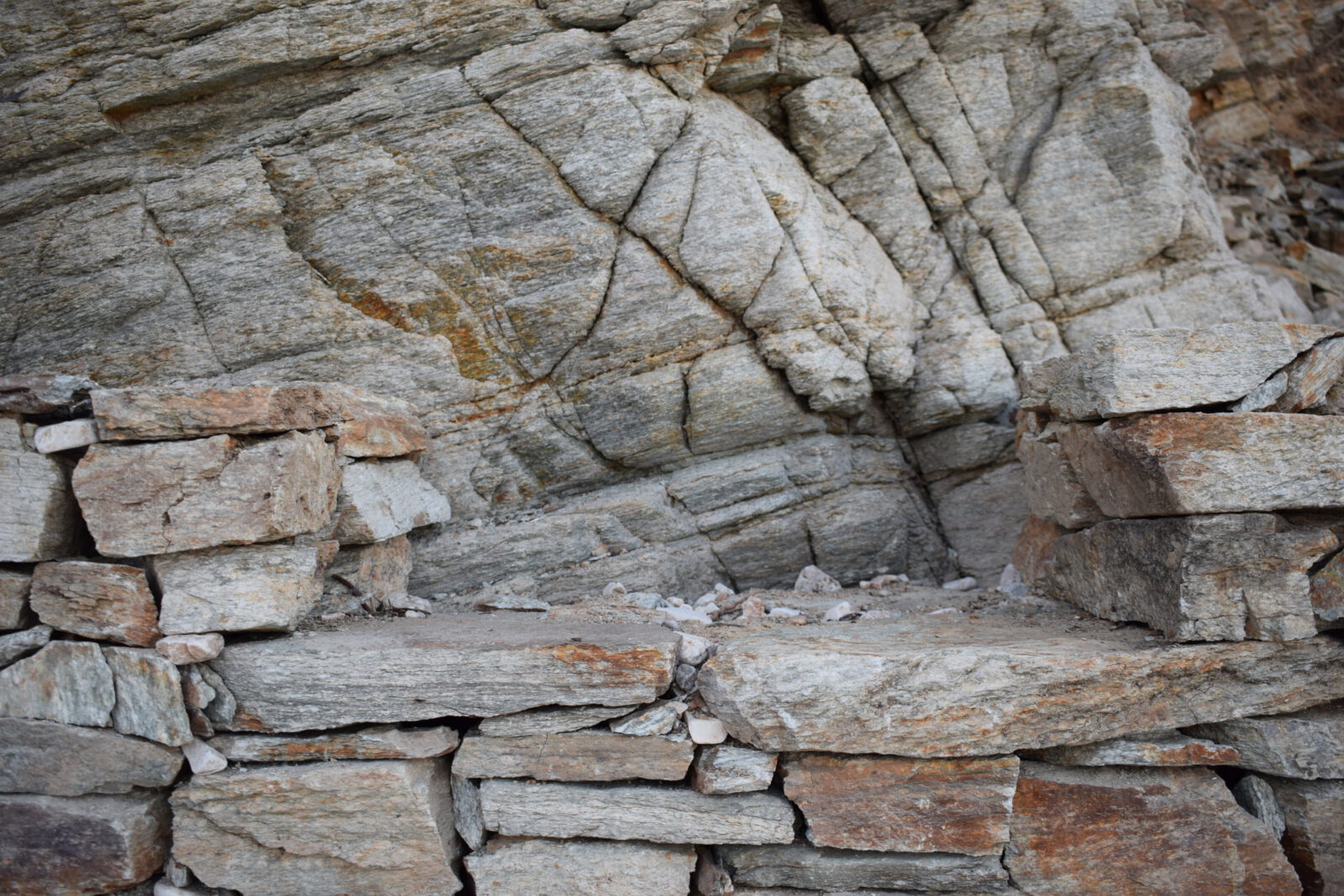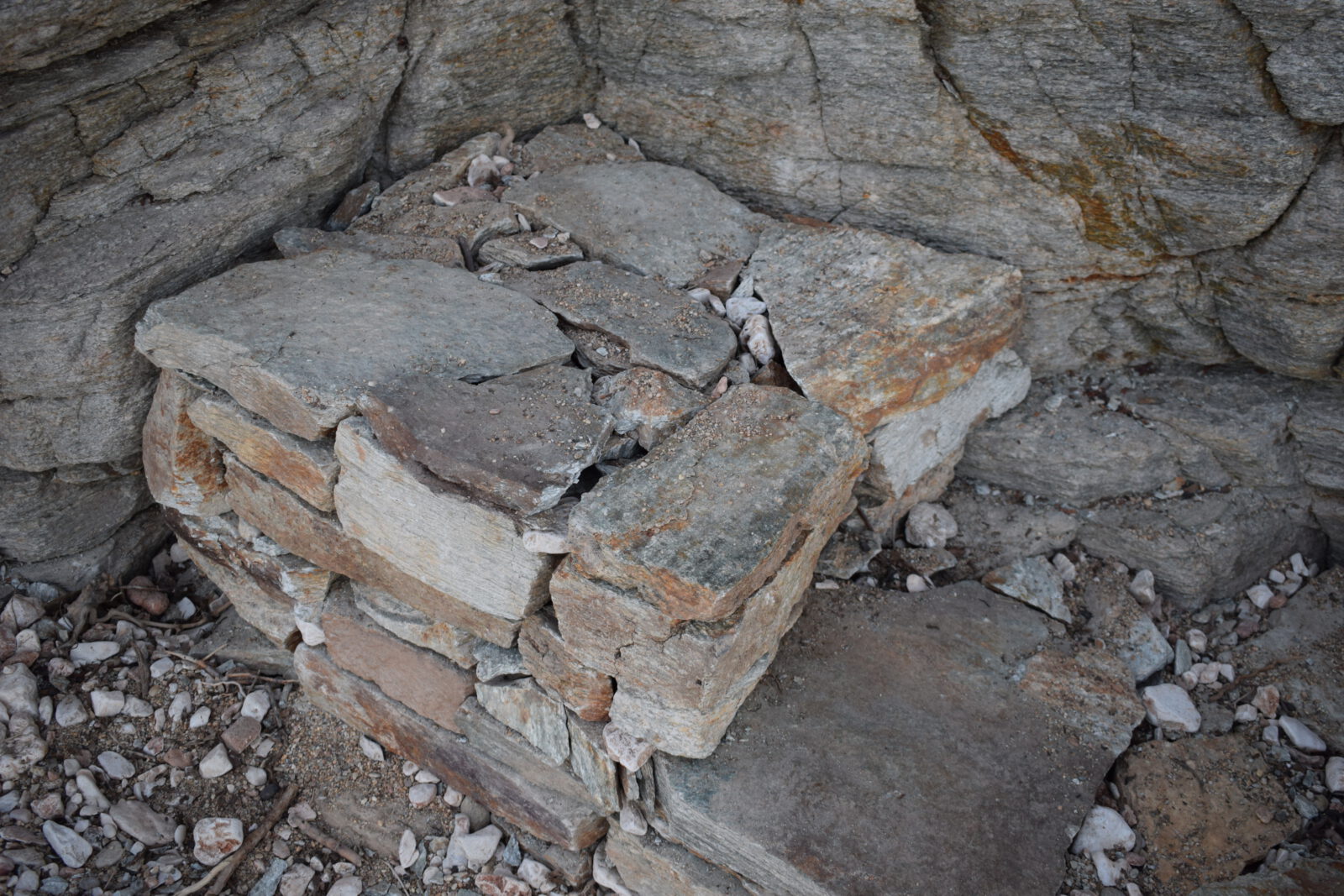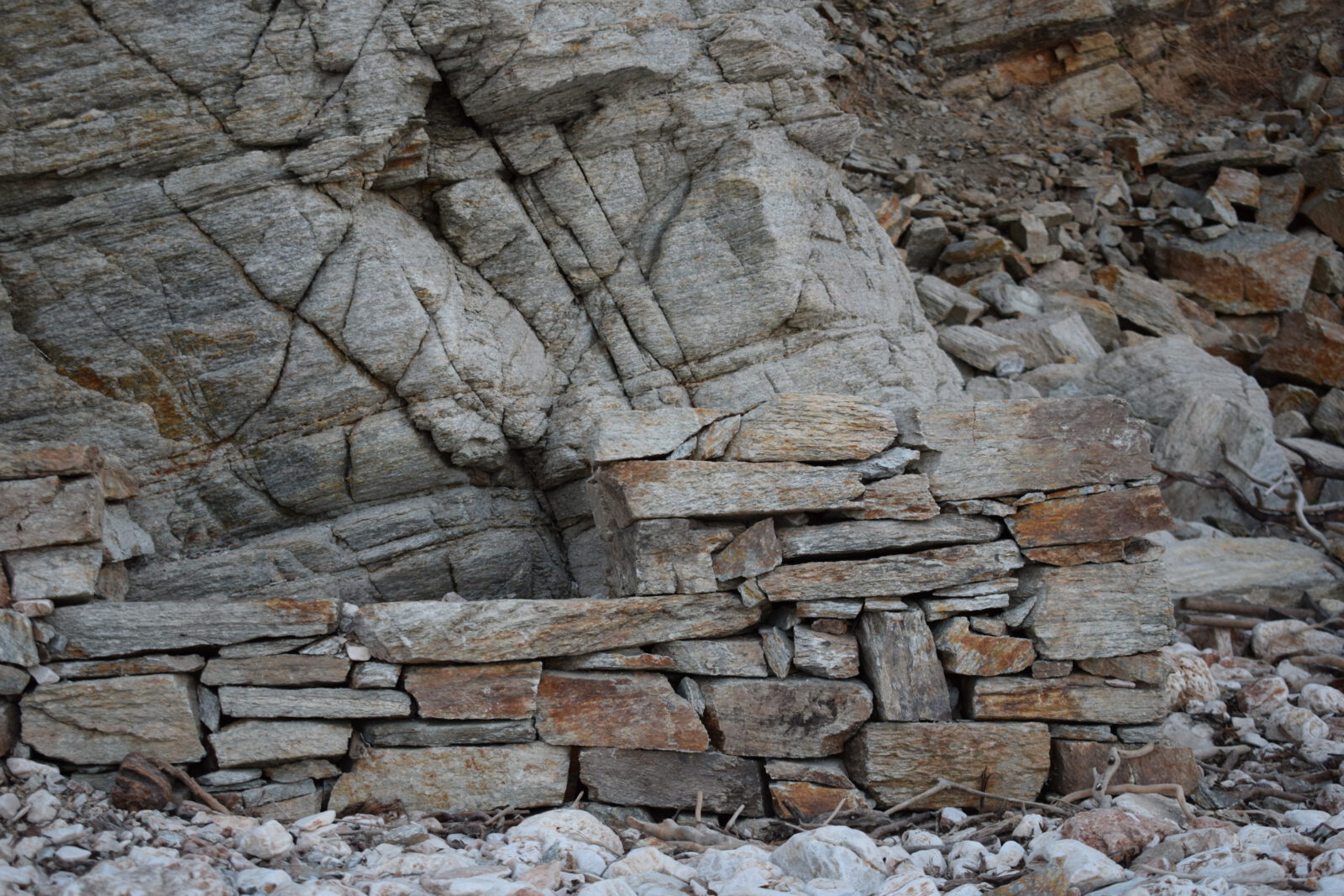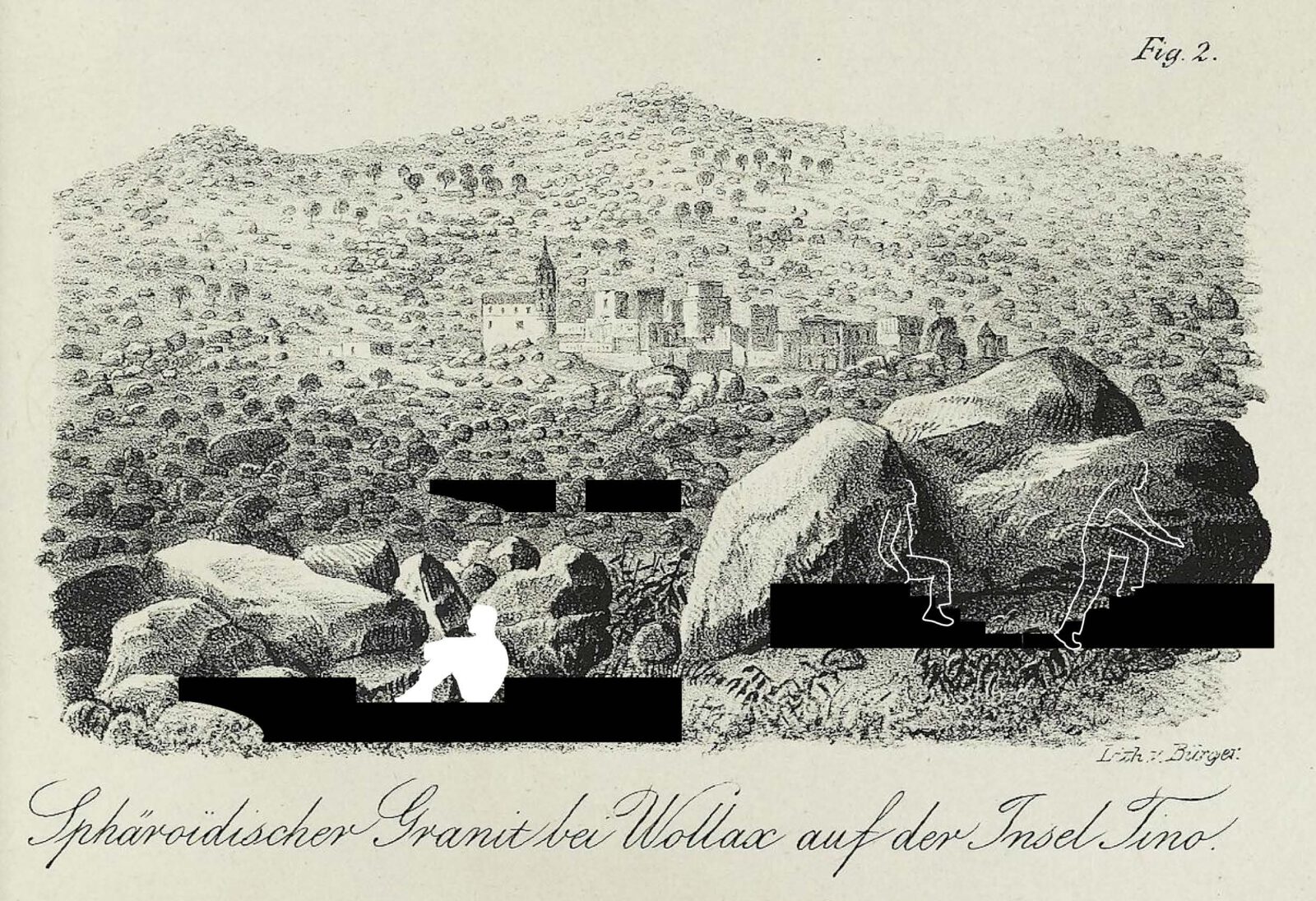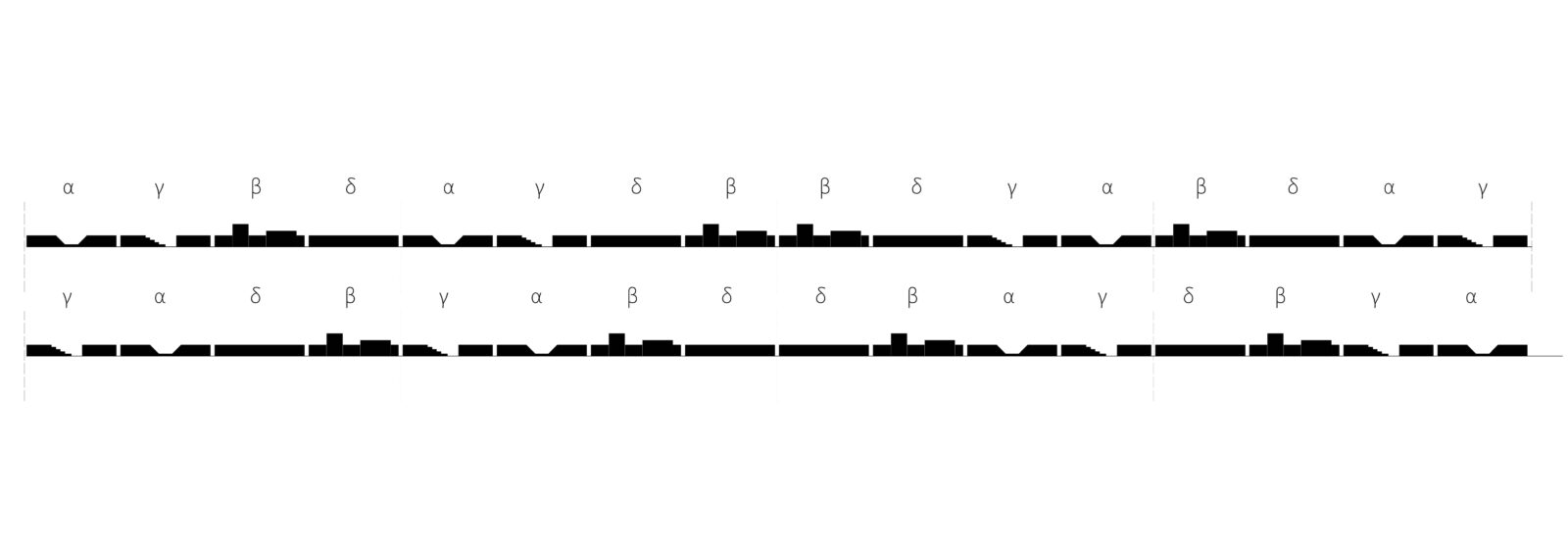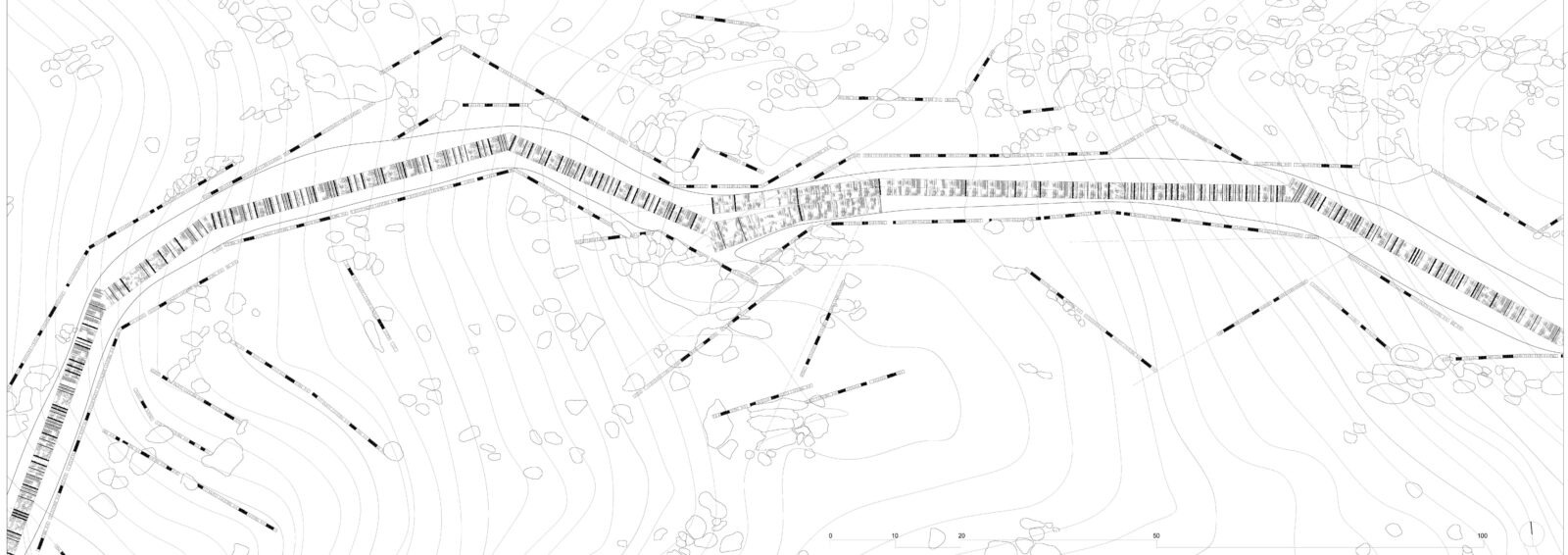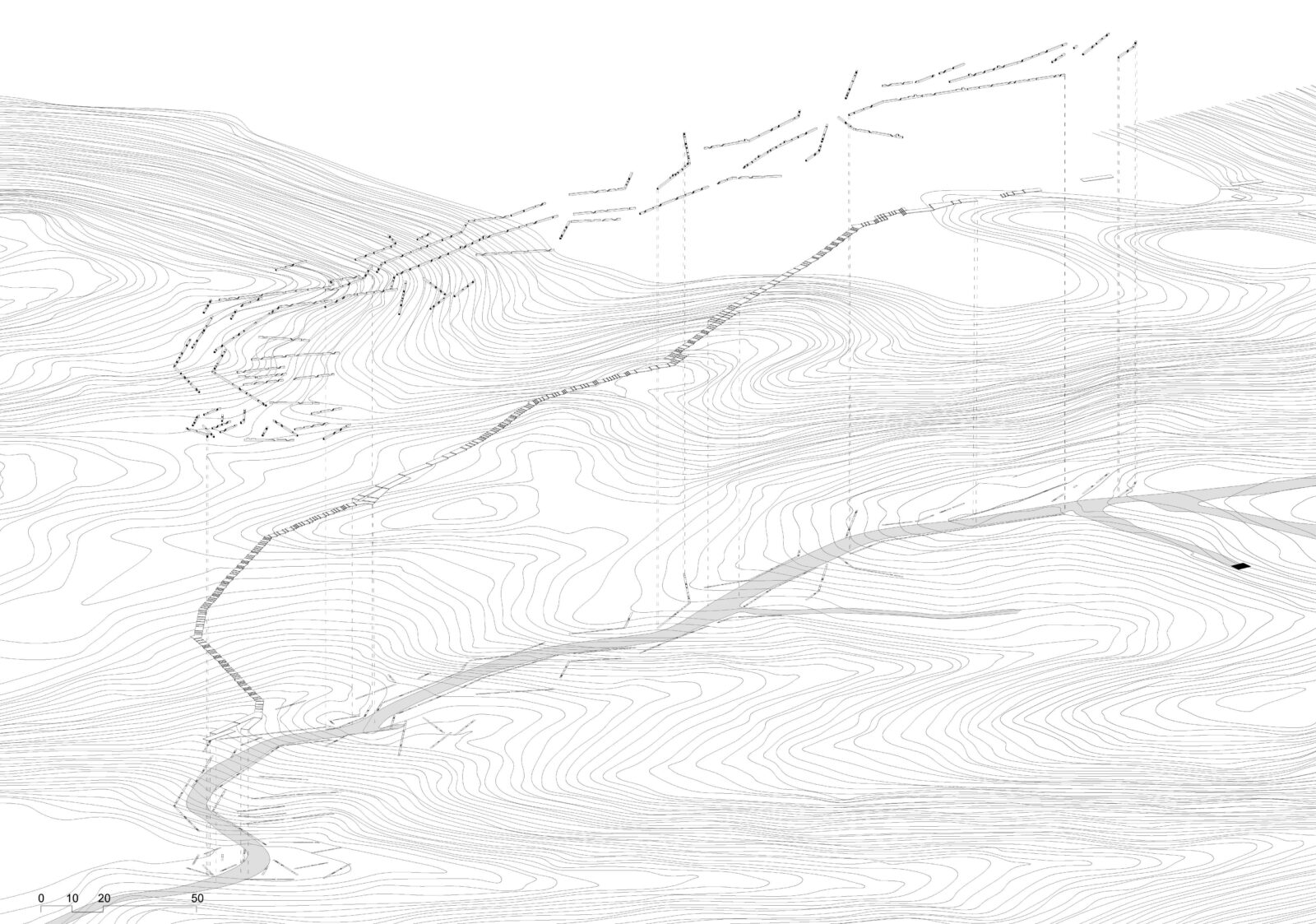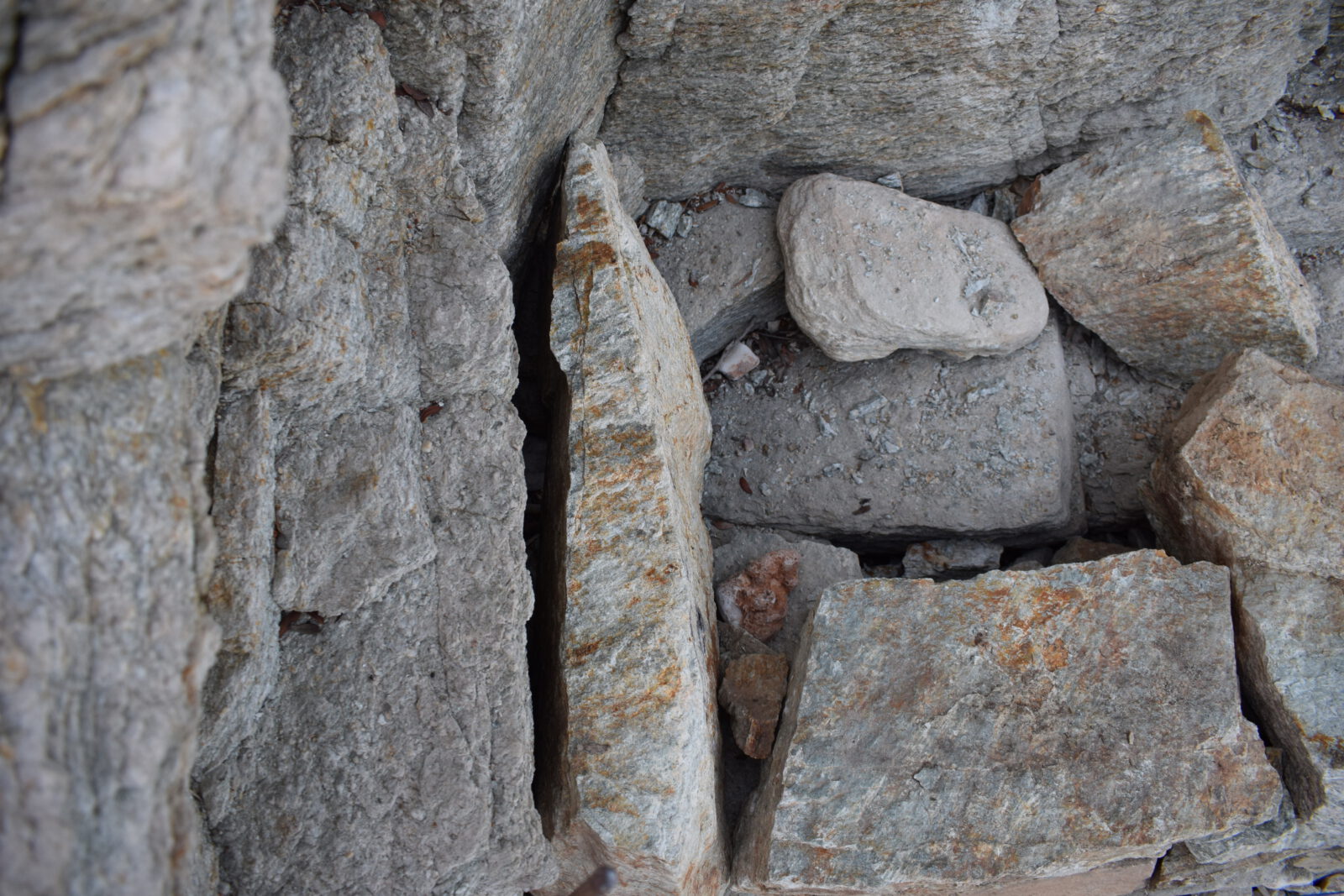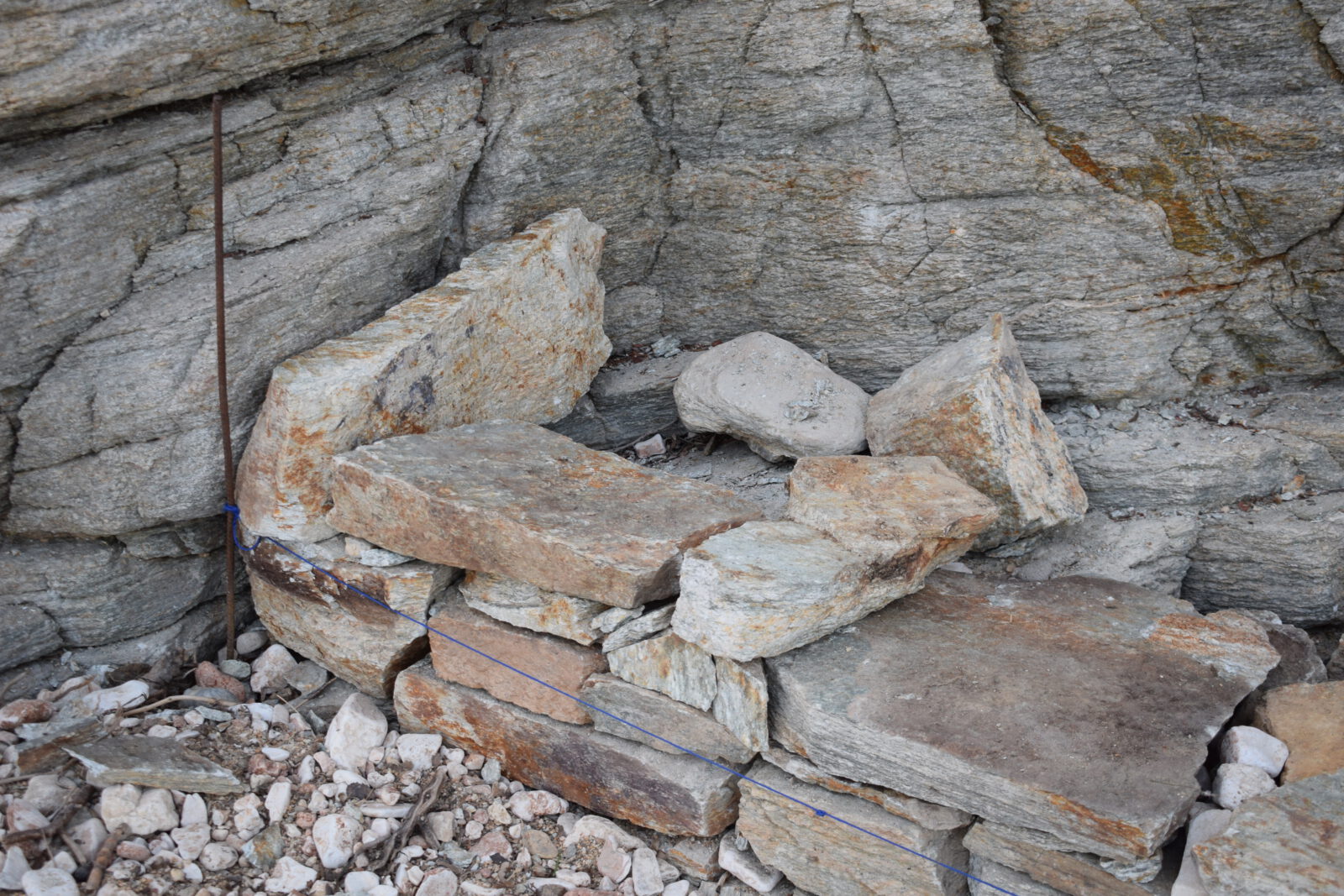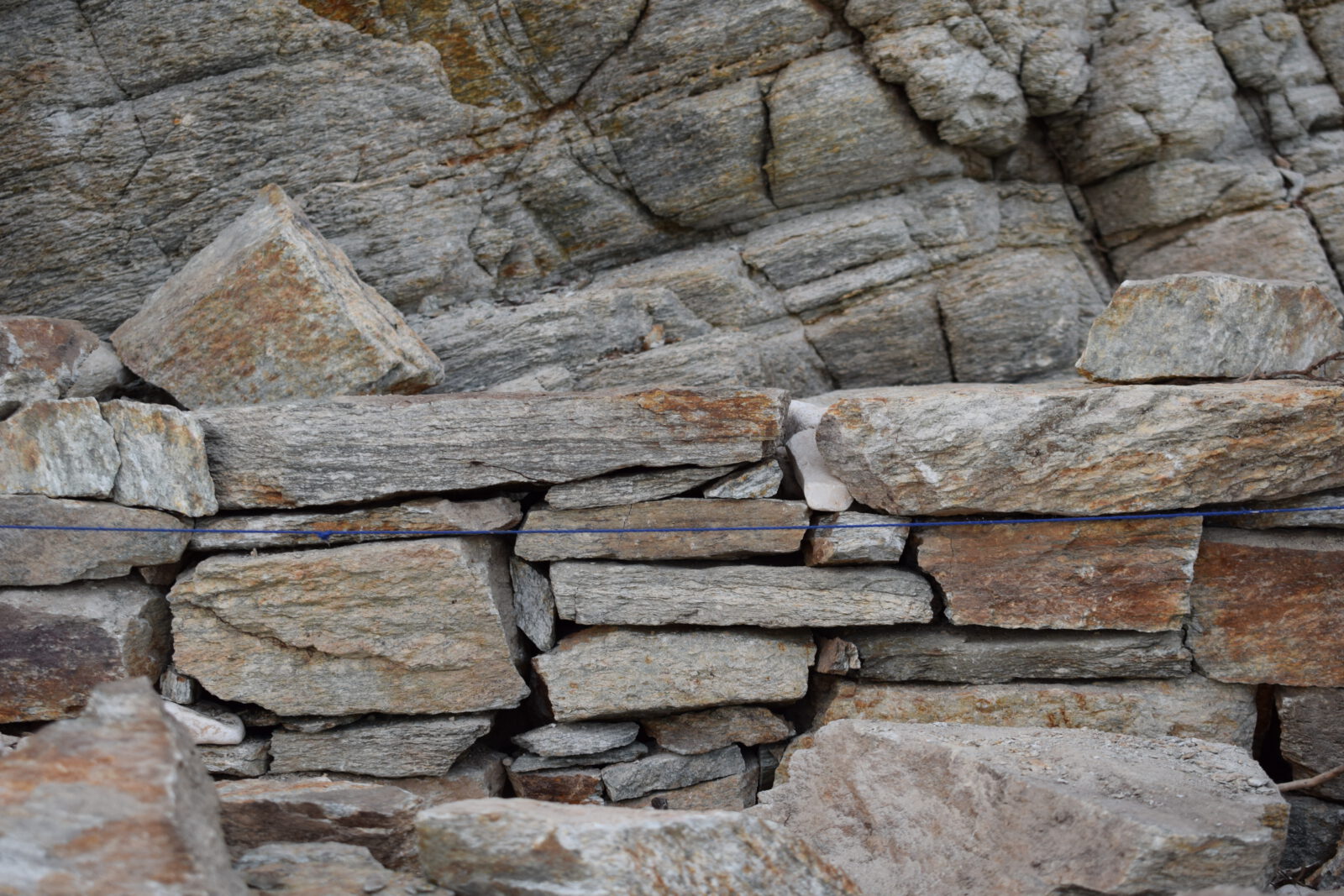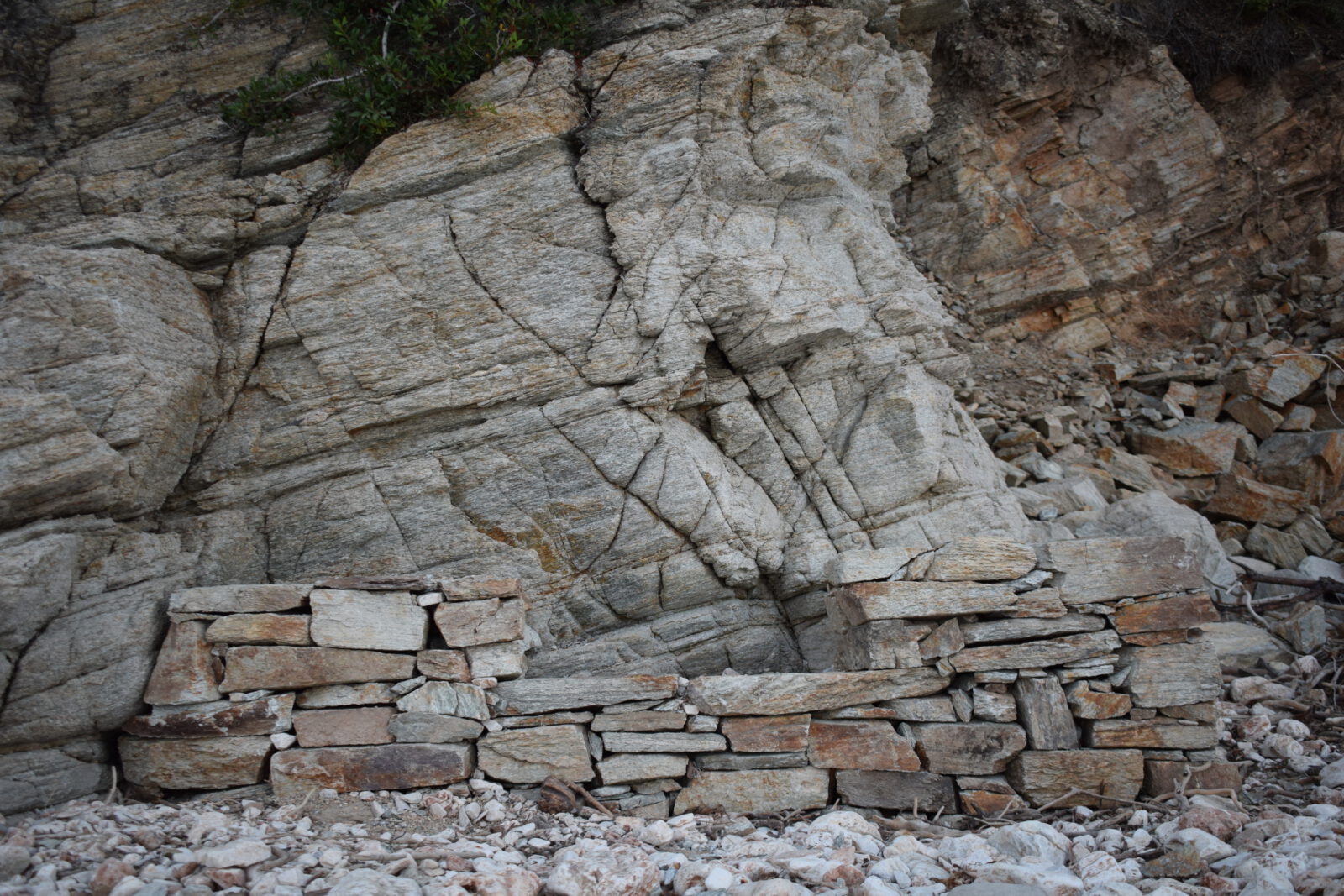Η παρούσα διπλωματική εργασία της Κορνηλίας Χριστοδούλου έχει ως βασικό ερώτημα το πώς ενσωματώνεται το ανθρώπινο σώμα στο τοπίο, δηλαδή τη δράση του ενεργού ανθρώπινου σώματος μέσα στο τοπίο το οποίο μορφοποιείται και μορφοποιεί.
« Μετρούμε τη γη με τον κόπο του κορμιού μας »
Δ.Πικιώνης, Συναισθηματική τοπογραφία
Ως πρωταρχικό ενέργημα μορφοποίησης τοπίου και σώματος επιλέγεται το ενέργημα του κτίζειν, και πιο συγκεκριμένα του κτίζειν της ξερολιθιάς.
Ο σωματικός μόχθος του ενεργήματος κτίζειν είναι αυτός που μορφοποιεί το τοπίο και ενσωματώνει το σώμα σε αυτό, παράγοντας την συνθήκη κατοίκησης του σώματος στο τοπίο. Ως τόπος δράσης του ενεργήματος αυτού επιλέγεται το έδαφος του Βώλακα, στην Τήνο.
Στο χωριό του Βώλακα το τοπίο διαφοροποιείται από το υπόλοιπο νησί με την εμφάνιση του στοιχείου της πέτρας υπό τη μορφή γρανιτένιων ηφαιστειογενών ογκόλιθων, στοιχείο που αποτελεί κυρίαρχο χαρακτηριστικό στο οροπέδιο γύρω από το χωριό Βώλακα και στα Πάνω Μέρη. Σφαιρικές μορφές γρανιτικών σχηματισμών γνωστοί και ως “βόλακες”, λόγω της αποσάρθρωσης, διάβρωση-διάλυση-αποσάρθρωση κάτι που παθαίνει κάθε πέτρωμα μέχρι να μεταμορφωθεί σε χώμα.
Με την ίδια την ονομασία του χωριού εκφράζεται η διττή έννοια ενός τόπου ως επιτέλεση πρωταρχικής ύλης και του ανθρώπινου ενεργήματος.
Στον Βώλακα είναι φανερά τα ανθρώπινα ίχνη που εντάσσουν τις ξερολιθικές κατασκευές στο φυσικό τοπίο με τους γρανιτικούς σχηματισμούς.
Η πέτρα της ξερολιθιάς βρίσκεται σε άμμεσο διάλογο με το πέτρωμα και εντείνεται η σχέση της δομής (ξερολιθιά), της φύσης (γρανιτικοί σχηματισμοί) και του σώματος που ενεργεί στο τοπίο και συνδέει τη δομή με την φύση. Το κτίζειν δομεί το τοπίο του Βώλακα και δημιουργεί έναν γεωτόπο όπου το ενέργημα του κτίζειν εντάσσει το σώμα στο τοπίο μέσω της δόμησης της ξερολιθιάς. Είναι έντονη η σχέση του ανθρώπινου ενεργήματος με την πρωταρχική ύλη της πέτρας και η ένταξη του ανθρώπινου σώματος στο τοπίο μέσα από το ενέργημα του κτίζειν.
Αναγνωρίζω το ενέργημα του κτίζειν της ξερολιθιάς ως το πρωταρχικό ενέργημα της διαμόρφωσης του αγροτικού τοπίου της Τήνου. Οι ξερολιθικές αναβαθμίδες που προκύπτουν είναι αποτέλεσμα της ανθρώπινης δραστηριότητας μέσω της οποίας το κατοικείν εμφανίζεται τόσο ως αποτέλεσμα αλλά και ως διαδικασία δόμησης της ξερολιθιάς στο συγκεκριμένο τοπίο. Η διαδρομή στο τοπίο αυτό επιλέγεται ως το μέσο της ένταξης του σώματος στο τοπίο.Ο σωματικός μόχθος του κτίζειν είναι αυτός που μορφοποιεί το τοπίο και το σώμα ενώ παράλληλα η διαδρομή ορίζει το ρυθμό της δράσης της μορφοποίησης και ένταξης του ανθρώπινου σώματος στο τοπίο.
Ο τρόπος με τον οποίο γίνεται η σωματοποίηση του τοπίου εδώ ώστε το κινούμενο σώμα να συνδεθεί με το περιβάλλον, να ενταχθεί σε αυτό και να δημιουργήσει νόημα, είναι ο ρυθμός που προκύπτει από τις μεταθέσεις των δομών της ξερολιθιάς και του σώματος.
Για να εφαρμοστεί ο τύπος των μεταθέσεων, δημιουργούνται 4 κατηγορίες δομής της ξερολιθιάς από το προηγούμενο πάντρεμα : α- κάθισμα αντικριστά, β- κάθισμα, γ- εισχώρηση σώματος_ διάσπαση ξερολιθιάς, δ- ξάπλωμα_ενιαία ξερολιθιά.
Στο δεύτερο επίπεδο επεξεργασίας, μέσα από την οργάνωση του εδάφους του καλντεριμιού σε τομή σύμφωνα με τα σύνολα των διαστάσεων, προκύπτει ότι ο τρόπος με τον οποίο εντάσσεται το ανθρώπινο σώμα στο τοπίο και με τον οποίο γίνεται η σωματοποίηση του τοπίου είναι ο ρυθμός του βηματισμού, ο οποίος έρχεται ως αποτέλεσμα του συνδυασμού των αριθμών των βημάτων με τις αντίστοιχες διαστάσεις των πλατωμάτων τους.
Προκύπτει ένας γεωτόπος που μορφοποιείται από το ανθρώπινο σώμα και το μορφοποιεί, μέσα από τον ρυθμό δράσης του σώματος. Αυτό γίνεται είτε μέσα από την μετάθεση των ξερολιθιών, και άρα την μετάθεση του σώματος, είτε μέσα από τον ρυθμό του βηματισμού του ανθρώπινου σώματος στο καλντερίμι.
Στοιχεία έργου
Τίτλος εργασίας Σώμα – Τοπίο – Ρυθμός | Μεταθέσεις σωμάτων και λίθων στο έδαφος του Βώλακα, Τήνου
Τυπολογία Διπλωματική εργασία
Εξεταστική περίοδος Ιούλιο 2024
Φοιτήτρια Κορνηλία Χριστοδούλου
Επιβλέπων Ζήσης Κοτιώνης
Σχολή Τμήμα Αρχιτεκτόνων Μηχανικών του Πανεπιστημίου Θεσσαλίας
The main question of this thesis by Cornilia Christodoulou is how the human body is integrated into the landscape, i.e. the action of the active human body within the landscape which is shaped and shaped.
As the primary act of shaping landscape and body, the act of building, and more specifically the building of dry stone, is chosen.
It is the physical labor of the act of building that shapes the landscape and incorporates the body into it, producing the condition of the body’s inhabitation of the landscape.
The territory of Volaχ, in Tinos, is chosen as the place of action for this act. In the village of Volax, the landscape differs from the rest of the island with the appearance of the stone element in the form of granite volcanic boulders, an element that is a dominant feature on the plateau around the village of Volax and in the Upper Parts. Spherical forms of granitic formations also known as “volaches”, due to the disintegration, erosion – dissolution – disintegration something that happens to every rock until it transforms into soil.
The very name of the village expresses the dual concept of a place as the result of primary matter and human action. In Volax, the human traces that integrate the dry stone constructions into the natural landscape with the granite formations are evident.
The drystone stone is in direct dialogue with the rock and the relationship between the structure (drystone), nature (granite formations) and the body that acts on the landscape and connects the structure to nature is intensified.
The building structures the landscape of Volax and creates a geotope where the action of the building integrates the body into the landscape through the construction of dry stone. The relationship between human action and the primary material of stone and the inclusion of the human body in the landscape through the act of building is intense. I recognize the action of dry stone building as the primary action of shaping the rural landscape of Tinos. The dry stone terraces that result are the result of human activity through which the inhabitation appears both as a result and as a process of building the dry stone in the specific landscape. The path in this landscape is chosen as the means of integrating the body into the landscape.
The physical work of the building is what shapes the landscape and the body, while at the same time the route defines the rhythm of the action of shaping and integrating the human body into the landscape. The way in which the landscape is embodied here so that the moving body connects with the environment, joins it and creates meaning, is the rhythm that results from the metathesis of the structures of the dry stone and the body. To apply the type of metathesis, 4 categories of drystone structure are created from the previous marriage: a- face-to-face sitting, b- sitting, c- body integration_ drystone splitting, d- lying down_ single drystone.
In the second level of processing, through the organization of the ground of the cobblestone in a section according to the sets of dimensions, it follows that the way in which the human body is included in the landscape and in which the embodiment of the landscape is done is the rhythm of the step, which comes as a result of combining the numbers of the steps with the corresponding dimensions of their platforms.
A geotope emerges that is shaped by the human body and shapes it, through the rhythm of the body’s action. This is done either through the metathesis of dry stones, and thus the metathesis of the body, or through the rhythm of the human body’s pace on the cobblestones.
Facts & Credits
Project title Body-Landscape-Rhythm-Metathesis of bodies and stones at the ground of Volax in Tinos
Typology Diploma thesis
Academic semester July 2024
Student Cornilia Christodoulou
Supervisor Zisis Kotionis
Institution Architecture School of University of Thessaly
READ ALSO: THERM-al oasis: επανένταξη του θερμαλισμού στη ζωή της τοπικής κοινότητας Θέρμης | Διπλωματική εργασία της Γκέκα Πολύμνιας
